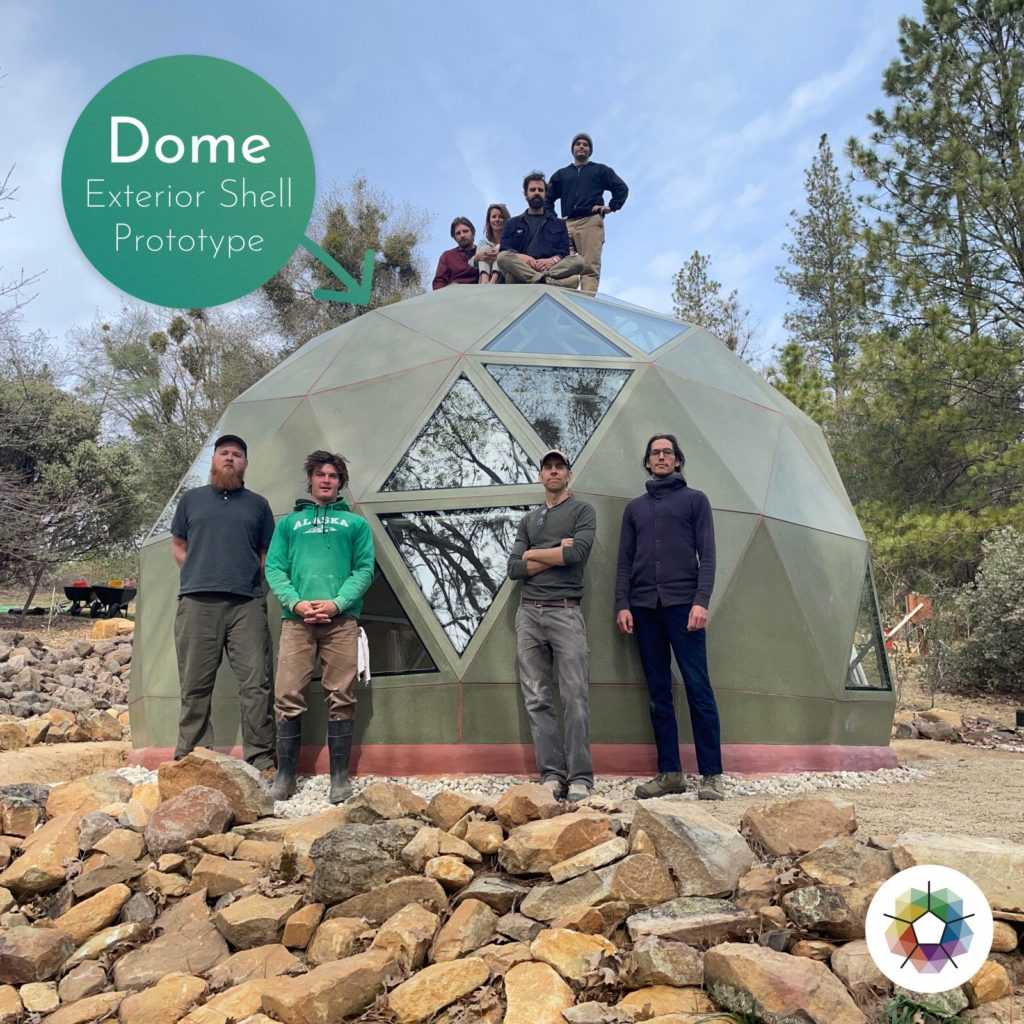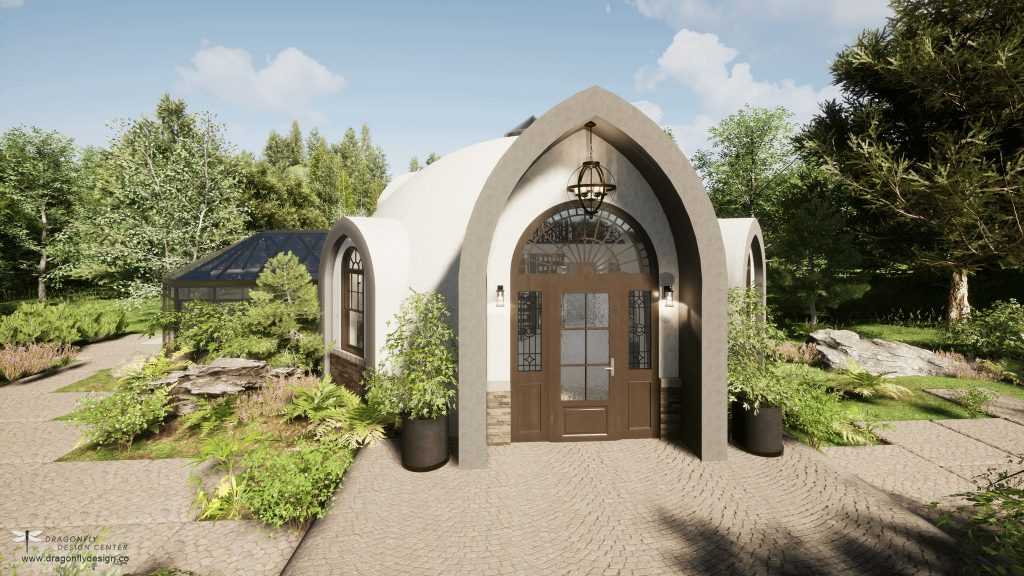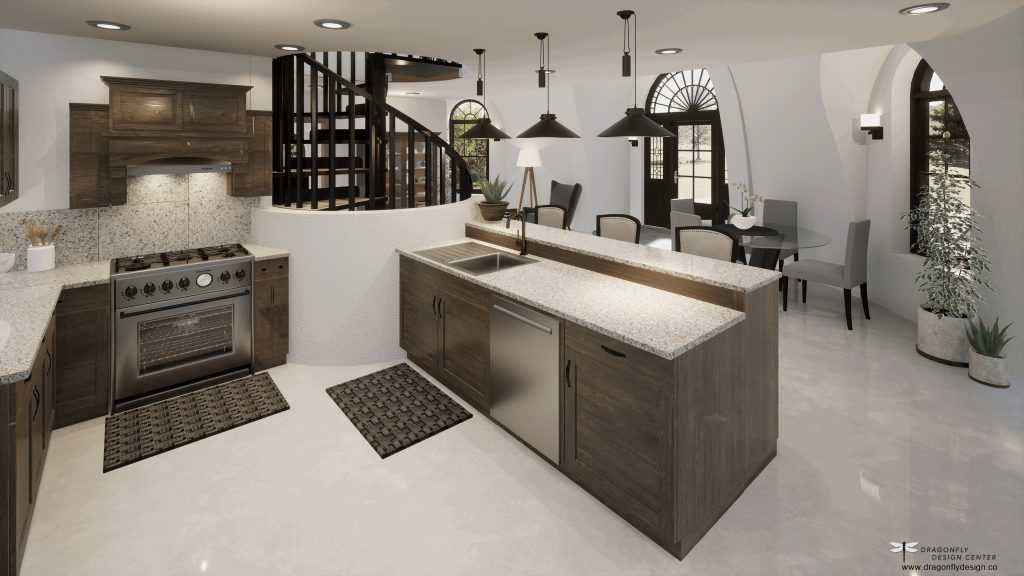“Dome builders are uniting to catalyze humanity’s progress towards a regenerative future!”
— Morgan Bierschenk, CEO of Geoship
It’s no longer something you see in Star Trek or some sci-fi movie. If you’re like many Star Trek fans, you might get a little excited at the speed at which technology, building materials and futuristic architecture, are evolving.
Thanks to recent advances in material science and construction technology, amazing futuristic architecture promises to forever transform our human habitations with a fresh new look. Soon, you might expect to be living the freedom lifestyle of your dreams in an ecoliving space-age dome home – let’s have a look.
What Does Futuristic Dome Home Architecture Look Like?
Here’s a couple of futuristic building methods that are coming our way in the very near future:
Bioceramic Dome Homes:
Will your next home be an ecoliving bioceramic geodesic dome? Bioceramics are used in the human body because their chemical composition is similar to bone, making them biologically compatible. New material science and manufacturing technologies, now also, make it possible to prefabricate bioceramic building components that can be shipped direct to construction sites and installed by owner-builders – logically, starting with Nature’s most efficient structure, the geodesic dome.
This new bioceramic material science is a chemically-bonded, inorganic polymer that forms water-proof cold joints. Essentially, the bioceramic space frame and panels are bonded together with bioceramic mortar – thus, transforming the entire structure into a monolithic bioceramic geodesic dome.
Earth-friendly bioceramic domes are biologically resonant, regenerative and healthy. Built to withstand Nature’s extremes, bioceramic domes can conceivably last 500 years – they are bugproof and can’t rot, rust or grow mold.
Morgan Bierschenk, CEO of Geoship, envisions that bioceramic domes will crater the cost of housing to replace the unsustainable wooden, metal and concrete boxes we, now, call homes. Geoship estimates the carbon footprint of bioceramic domes to be 10x to 100x less than a wood box of equal size.
Regenerative Geodesic Villages: Using Web3 technology, Geoship is also, exploring new ways to materialize regenerative villages in the real world by democratizing the design and development of geodesic villages in a cloud-based decentralized metaverse. Imagine connecting with your tribe to form and design your own geodesic village around the exciting prospect of a Decentralized Autonomous Organization (DAO)!
Geoship calls it a profit-for-all cooperative model where investors, clients, employees and Nature all come together as co-owners. This new, and at the same time, ancient cooperative model supports building strong healthy relationships with ourselves, our communities and the natural world.

“Envision a highly crystalline ceramic earth sanctuary that calms your senses and restores balance. A place of beauty, sustenance, and maximum efficiency. A home where light and electromagnetic waves harmonize with biological systems. Within it, you feel embodied and still connected to all that exists outside – Nature, community and the universe. This is your ceramic dome calling!”
Investing in the future of home: In 2020, the Geoship team raised over $1m to complete the deep R&D around bioceramic dome manufacturing! Recently, in 2022, Geoship successfully installed their first bioceramic dome prototype – and now, Geoship is in the process of raising additional capital to improve their design and begin pilot production. You can become an investor and co-owner in Geoship through Geoship’s StartEngine campaign. Or, sign up on the Geoship website to receive exciting bioceramic dome and village building updates.
3D-printed Dome Homes:
In the not too distant future, 3D-printed homes have the potential of revolutionizing the housing industry by making them more affordable. Can you see yourself designing your own custom 3D-printed dome home, where you get to include all the features that you love for less than the price of a new car?
In March of 2018, the world watched in awe as the 3D-printed home construction race peaked with the unveiling of the first permitted 3D-printed home in America. Three years later, in 2021, an Italian start-up unveiled their 3D-printed prototype, built on-site using natural materials found in the local area (30% clay, 40% silt, 30% sand), 40% chopped rice straw, 25% rice husk, and 10% lime). The round-shaped structure, “Gaia”, was supported by beams and a sloping, extended wooden roof that diverts rain water to a nearby pond – not, unlike the rounded-structures built by our ancestors.
WASP – World’s Advanced Saving Project and WASP Crane 3D-printing equipment are the brainchild of the Italian father-daughter team. WASP was inspired by Nature – remarkably, the mason wasp, which builds its nest with material recovered from its surrounding environment. Kirsten Dirksen of Fair Companies gives us the big picture video tour of this amazing futuristic architecture.
3D Sustainable Developments (3DSD), a Washington State Social Purpose Corporation, is developing 3D-printed domes using a robotic sprayer, which was invented to apply a magnesium oxide (MgO) compound. MgO lasts thousands of years and is as strong as steel, yet, contains no metal. MgO is a highly resonant crystalline compound that is fire-resistant and creates a radiation shield – hence, it’s healthier for occupants.
3DSD founder, Noah Israel, is President and Director of Technology at 3D Sustainable Developments. He designed, built and holds a patent for his 3D Dome Printing System which utilizes ceramic cements and geopolymers for 3D home construction and industrial applications.

More on Futuristic Architectural Building Materials
Consider upgrading your new or existing semi-permanent dome home to a permanent structure by retrofitting it with these state-of-the-art building materials:
Aircrete: Are you a hands-on DIY’er who loves the thought of building your own futuristic shelter? Then, you might be interested in learning more about Aircrete.
What is Aircrete? AirCrete is a mixture of cement, water and foam. According to DomeGaia founder and creative director, Hajar Gibran, AirCrete is a lightweight non-toxic masonry material that is easy and inexpensive to make yourself with their Little Dragon continuous foam generator.
Hempcrete: Hempcrete is a bio-composite created by mixing the woody inner core of the hemp plant with a lime-based binder. The hemp core or “Shiv” has a high silica content which allows it to bind well with lime. Amongst all natural fibers, this property is found to be unique to hemp. The result is a lightweight cementitious insulating material, weighing about a seventh or even, an eighth of the weight of concrete. Fully cured hempcrete blocks float in a bucket of water.
The good news is that hempcrete has been submitted for certification into US Building Codes. As an up-and-coming eco-friendly building material, not only will hempcrete bio-composites save our forests – they’re being touted as being stronger than concrete. Hempcrete contains no VOCs and is pest and mold resistant. Hempcrete is environmentally safe and creates a breathable wall, which is healthy for its occupants.
Hemp Solutions, an Oregon-based company, is pioneering hempcrete for an environmentally safe future. With the increasing demand for the construction of tiny homes, hempcrete provides many advantages for environmentally safe home-building projects.
Shotcrete: The shotcrete process is a method of applying concrete projected at high velocity, primarily onto a vertical or overhead surface. Shotcrete is applied using either a wet or dry-mix process, and the impact created by the application consolidates the concrete. Although the hardened properties of shotcrete are similar to those of conventional cast-in-place concrete, the nature of the placement process results in a good bond with most substrates, including metal wire.
The shotcrete process requires less formwork and can be more economical than conventionally placed concrete. Shotcrete has been used as a spray-on solution, for many years in new construction and concrete repairs – and, is excellent for curved and thin elements, such as domes. What’s new is the recent introduction of other eco-friendly bonding materials that hold a promising future for a sustainable world.
X-Rok: Concerned about radiation and microwave technology overload? Composed of a mineral, called magnetite, the X-Rok formula is ideal for guarding against the damaging effects of electromagnetic pulses, which are known to disrupt human biofields and our delicate ecosystem – in essence, all organic life.
By description: “X-Rok is a high-strength, chemically-bonded ceramic radiation shielding concrete/ coating material that uniquely solidifies, shields and acts as a barrier to contain all levels of harmful radiation – including, EMF/EMP, RF, microwave, X-ray, Gamma & Neutron emissions.”
Judd Hamilton, the inventor of these magnesium oxide compounds holds global patents for nuclear waste containment. Judd is the founder of EcoC3 Research Alliance.org in partnership with the Ceramic Cement Corporation – two sites worth exploring.
GigaCrete: GigaCrete stucco was applied to the exterior of a large Event Dome at the Veteran’s Village Kins Community in Arizona. GigaCrete is another eco-building material that is touted as being highly water-proof, flame-proof, bullet-proof – and even, withstands hurricanes and earthquakes.
Futuristic Insulation Materials
Aerogel Insulation: An environmentally friendly, alternative to traditional insulation materials, aerogel insulation has been found to be up to 4X’s more effective than fiberglass; and, more than 8X’s plus, more energy-efficient than polyurethane.
Cool Brick: Inspired by the concept of evaporative cooling, Cool Brick is a latticed and porous 3D-printed ceramic brick set in a mortar-like substrate. Warm air moves through each brick, and its network of tiny holes, heats the water contained in each of the pores. As the water is heated, it evaporates, cooling the air and lowering a building’s temperature in the process. The shape of the brick creates a shaded wall that keeps the surface cool and protected from the sun.
Solar Paint for your Dome Home: Thanks to a growing number of innovative technologies and initiatives, using clean Solar Energy to power homes is becoming easier, but have you heard about solar paint? There are a few different type of solar paints in development that hold promise in mitigating those high-energy costs.

Can’t wait to Build Your Futuristic Dome Home?
One of the early geodesic dome pioneers, Pacific Domes Manufacturing, is eagerly anticipating this new era of amazing futuristic architecture, as well! In keeping with sustainable practices, Pacific Domes is committed to using eco-friendly materials in the construction of their prefab domes by exploring the development of HempCrete and MgO for future construction of Dragon Crete Domes. If you are considering retrofitting your new or existing semi-permanent dome to convert it to a more permanent structure, you might like to explore spray-on HempCrete as a quick and easy option.